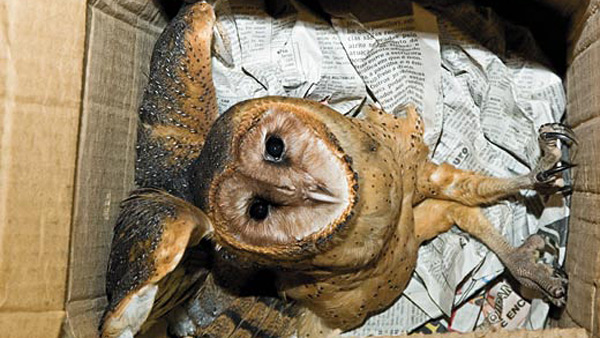
|  |  |  Editorials | Environmental Editorials | Environmental  
Wildlife Trafficking - Part 2
 Charles Bergman - Smithsonian.com Charles Bergman - Smithsonian.com
go to original
January 10, 2010

Smithsonian magazine, December 2009


| | In a raid at one market, environmental police in Belém, Brazil confiscated 38 birds being sold illegally and arrested traffickers. (Charles Bergman) |  |
Habitat loss is probably the main threat to New World tropical animals, says Carlos Drews, a biologist for the World Wildlife Fund in Costa Rica. "Wildlife trafficking and overexploitation are probably second." As one zoo director in Brazil told me, "There are no limits. You can buy whatever you want. Every species is for sale."

My guides and I had been traveling by canoe down a small river in the Napo region of Ecuador when we found the scarlet macaws. We scrambled from the canoe and hustled through thick mud toward the tree, sinking at times to our knees. On a small rise, we quickly built a leafy blind out of tree branches. The macaws had left as we entered the jungle, and we waited behind the blind for them to return. We wanted to watch their comings and goings to see if they had chicks. The macaws returned to the nest right away. One announced itself with raucous "rraa-aar" screeches, then landed on the trunk, clinging sideways while it looked at the blind.

Like many parrot species, scarlet macaws (Ara macao) pair up in long-term relationships. They can live for decades. The birds eat fruit and nuts, nest high in trees, and raise one or two chicks at a time. Their range extends from Mexico to Peru, Bolivia and Brazil. We were lucky to find a pair nesting low enough to be easily visible.

Scarlet macaws are a study in primary colors—fiery red, cadmium yellow and dark blue. Yet each has distinctive markings. The red on the macaw at the nest shaded in places to flame orange, with blue tips to the yellow feathers on its wings. Small red feathers dotted its pale-skinned face, like freckles on a redhead. Apparently satisfied that there was no danger, the mate flew into the nest hole. The first bird left the tree, and the macaw in the hole peeked out at us.

"How much could this bird sell for?" I asked.

"Maybe $150 around here," said Fausto, the canoe driver. (I use my guides' first names to preserve their anonymity.)

I was surprised. I'd been offered many animals in my research on the wildlife trade, and $150 was about what I would have expected in Quito. It was more than what most people on this river make in a year.

Fausto, who came from another part of the country but had picked up the local language, made his living hauling cargo on rivers and hunting animals for meat. He had introduced me to Paa, a hunter from the Huaorani people, who had invited us to join him as he tried to catch a macaw. The Huaorani had fiercely maintained their independence through centuries of colonization; only when oil exploration reached this part of the Amazon in the 1960s and '70s did their culture begin to change. Many Huaorani still maintain traditional ways. They and other local indigenous people sometimes eat macaws.

Animals are central to the Huaorani, and almost as many pets as people live in Paa's community, from monkeys and macaws to turtles and tapirs. It is legal for the Huaorani and other indigenous peoples of Ecuador to capture animals from the jungle. The Huaorani domesticate the animals, or semi-domesticate them. What is illegal is to sell them. Paa said he wanted to catch the macaw chicks to make them pets.


|

 |
|  |



